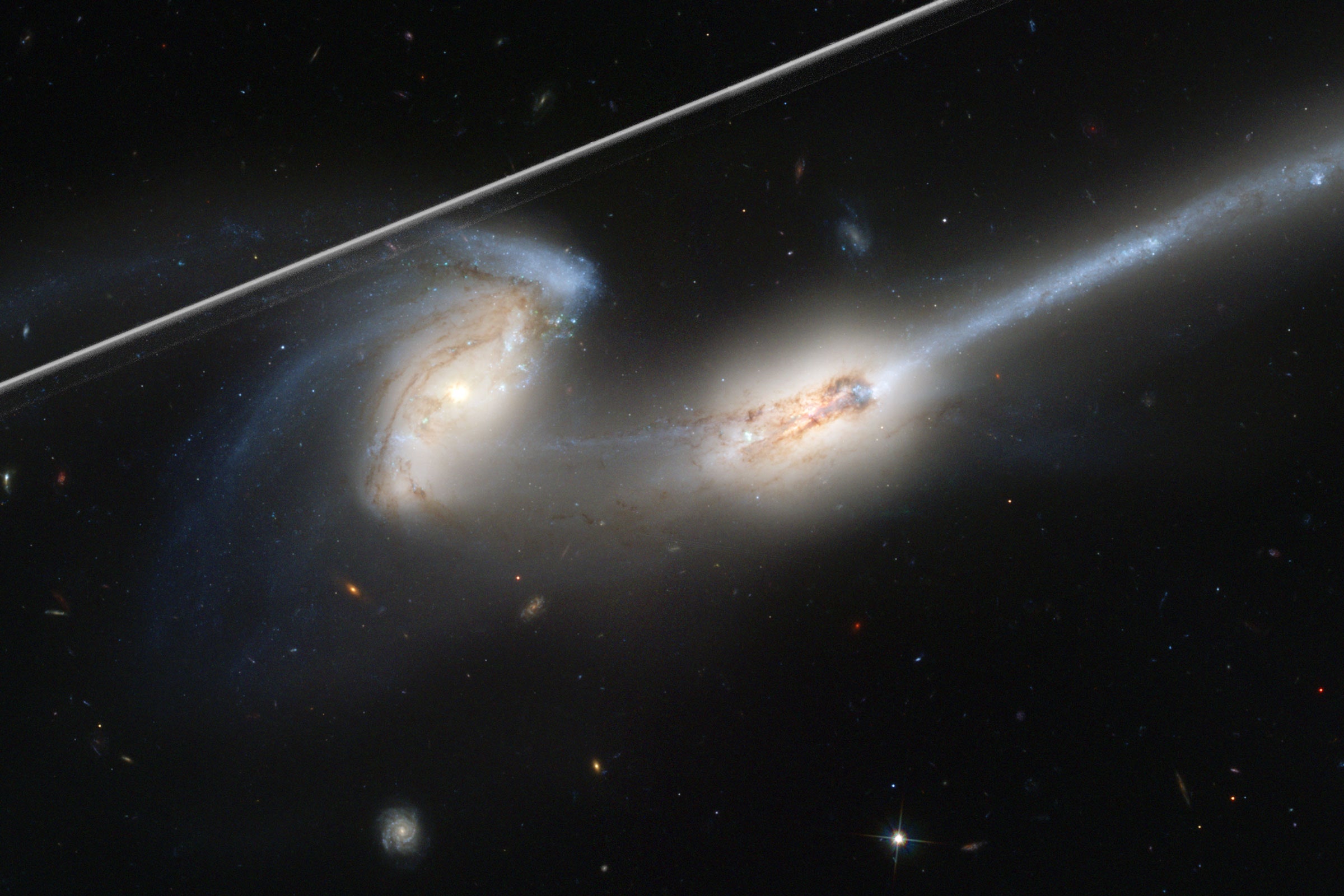.jpg)
Satellites Keep Photobombing Space Images. Astronomers Need a Fix
Throngs of satellites are streaking across the Hubble Space Telescope’s field of view, leaving what look like scratch marks on space photos and hindering scientists’ work. Teeming swarms of these satellites, which reflect sunlight and mimic astronomical objects, threaten to gradually transform the night sky and affect how astronomy can be done.
“We see these satellite trails in Hubble data, and really in all astronomical data, and they’re a bit of a nuisance,” said David Stark, an astronomer at the Space Telescope Science Institute in Baltimore, speaking last week at the American Astronomical Society conference in Albuquerque, New Mexico. In fact, he said, his team used a new detection method to measure that the rate of satellite trails is doubling. But Stark was presenting his team’s idea for a Band-Aid fix: new software they described in a recent report that is five to 10 times more sensitive at finding trails than previous software, and then masking them out. “It’s particularly good at finding satellite trails that can be missed by eye,” he said.
It’s standard procedure for astronomers to try to clean images of “artifacts,” like the effects of cosmic rays hitting Hubble’s camera detectors, or diffraction spikes, which make bright stars look like crosses. Occasionally, a pesky nearby Milky Way star might get in the way of one’s view of a faraway object. The new technique, called Median Radon Transform, examines every linear path across an image at every possible angle. When a particular path aligns with a satellite trail, the system notes a deviation from the average flux—or the brightness at a particular wavelength in a pixel—measured across areas with apparently empty sky. It can spot short streaks too, but they have to be slightly brighter to be identified, since they cover fewer pixels.
This software then allows astronomers to mask out satellite trails, so that the affected pixels are ignored in their analysis of the data. It’s like dog-earing a few misprinted pages in a book, so that you skip them while studying the rest of the volume.
But it’s better not to lose those pages. When there are multiple exposures of the same field, an astronomer can use additional software tools to completely remove the line from the final combined image. That part of the sky will then appear as it should, though the signal-to-noise ratio in that line’s pixels will be lower than if the satellite had never skimmed in front of the telescope that day. Stark and his team have included their code in a standard software pack called “acstools” that they manage.
Still, this fix has a big limitation: It’s designed for Hubble, which is orbiting 332 miles above the Earth, and it’s less plagued by satellite streaks than observatories on the ground. Ground-based optical telescopes with wide-field imaging—which often don’t take multiple exposures—stand to be far more affected. There have been a few instances already of satellites photobombing images taken by telescopes at the Cerro Tololo Inter-American Observatory in Chile and the Lowell Observatory in Arizona, for example.

